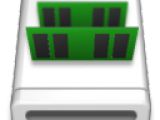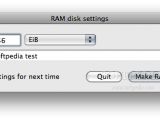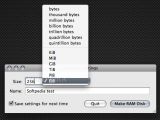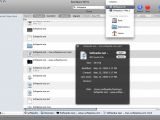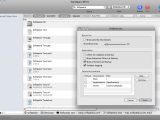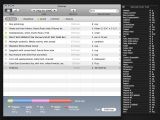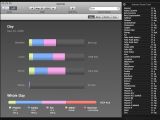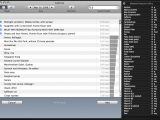Great to have you back! I'm not going to lie saying this week's apps are the bomb, 'cause they're not. Still, some of you may find usefulness in the three programs available for immediate download today, so if you're looking to (dramatically) speed up access times on your Mac, add a few features to Spotlight, or lose a few pounds (and I don't mean shaking off unnecessary hardware), have a peek below.
Make RAM Disk 1.0
Make RAM Disk provides an easy way to create, format, and mount a RAM disk. This provides faster access times compared to your hard drive. How does it do it? Easy! Most disks (volumes) are backed by some sort of permanent storage, such as an optical disc (CD and DVD), magnetic hard disk, or flash memory. In these cases, the data on the volume will persist after the computer is shut down. This happens because it's been written to permanent storage.
A RAM disk, however, has no permanent storage behind it. This means that the data on the RAM "disk" is stored only in your Mac's RAM (memory). The instant you shut down your Mac, that data will be "forgotten." However, RAM is very, very fast compared to your hard drive, because it's not a long term memory, so to speak. In fact, it's the fastest disk you can possibly have (except RAID). So, whenever you need to read or write something quickly, especially if you don't need that data after shutting down your Mac, a ram disk is all you need.
Make RAM Disk is part of your system RAM memory that functions like a disk drive. What you can do to benefit from the boost of write/read speed that a RAM disk is capable of is to batch process large quantities of files, edit large image files with image editing applications like Photoshop or even when having to work with huge spreadsheet files that contain vast amounts of data. A RAM disk proves to be good to your workflow because of the very quick saving times and the enhanced access speeds to the data contained in the file(s) you are working with.
A RAM disk is also great for iShowU temp files. As a user, you can place your Downloads folder (in Safari, Mail, Adium, etc.) on a RAM disk, if you seldom keep the things you download.
Besides super speedy saves, another use for a RAM disk is ensuring that your browser's cache files don't get inside wrong ends, compromising your security. Main uses for Make RAM Disk include: Download holding area, iShowU temp storage and Xcode build folder, so I'm sure that if you know your way around your Mac, you'll find this program very useful.
You can give it a shot right now, but not until you've read this comprehensive guide our guys have put together to ensure you're making good use of the application, and of course, your actual RAM.
Note: this is the first release of Make RAM disk; it includes no code changes since the beta.
SpotQuery 0.87 Beta
SpotQuery is an OS X application (Leopard only!) that can help you search faster and better using Spotlight. Sure, Spotlight is great and all, but it doesn't offer that many options, does it? You just FIND the file you're looking for and, eventually, open it. Often are the times when you really need to find a file and start manipulating it immediately (copy, edit etc.) And yes, then you have good ol' finder, but this is just a more advanced Spotlight that floods you with details. What you need is SpotQuery.
Don't say no until you've tried. As developer Mario Fischer puts it, "SpotQuery is a free and easy to use OS X application that will enable you to search faster and better using Spotlight." You see, you're not actually dumping Spotlight, nor is Spotlight turning its back on you. SpotQuery is a mere interface to Spotlight, which improves the default Spotlight search window, but mostly the results list.
Take a look at the images below. You get to filter your search so accurately that you'll find exactly what you're looking for in a jiffy, with pin point precision. More than that, you get absolutely every detail you want about that file (whether it's an app, song or picture), without having to touch it. SpotQuery will ask you what you want to do with it from its window.
Since this useful app focuses on the actual way you "view" your files, it also lets you customize favorite locations and even thumbnail size, but also preview images inline. You can even save queries and execute them later.
But what am I doing trying to explain all the benefits of using SpotQuery? You should have already started the download after reading the first two lines.
Calories 1.0
This Leopard-only app (by the way, have you upgraded yet?), as simple as it sounds, lets you manage dishes. While some see bacon and eggs as a snack, it can keep good track of what you eat every day, helping you figure out where your died goes wrong.
Although I'm pretty sure there are more male Mac users out there than female, why not consider something especially suitable for the female userbase? And, although there are some fat geeks out there who would do anything to shake off a few pounds, I have a feeling most of these guys will pass this app as a priority. Everyone should try Calories out nonetheless. I know I will, not to lose weight, but to gain some.
My guess is that Calories won't do couch potatoes much good either (except for letting them manage Big Macs and hot dogs any way they want). If you've chosen to sit all day doing nothing, no Mac app will help you get back into shape. But, if you're the sporty type who actually cares about the amount of calories in-taken each day, this program can make a really big difference for you, by tracking your eating habits and your (weekly, monthly, yearly) progress.
Of course, you'll need to be faithful to the app and not forget to tell it what you've eaten each day. As soon as you get home and fire up your Mac, just drag-and-drop the dishes you've had during the day (for breakfast, lunch, dinner, and the eventual snacks) on their predetermined category tabs, and let the app tell you the amount of calories you've in-taken on that particular day. You can also track your weekly, monthly and even yearly progress from the same window.
Calories lets you manage more than 6900 foods, but the demo version is limited to just 100 foods, not uses, which means you can keep it. The software incorporates the USDA Food Database for Dietary Study 3.0, and can keep track of your dietary habits based on 44 different nutrients.
Calories 1.0 is, of course, "just the beginning." Developer NSObjects assures Mac owners that future versions will let them add their own foods to database (I was just going to suggest that), add their own tags (that too), set daily goals for every nutrient (why aren't these here yet anyway?), manage whole meals - as in food bundles, add favorites for frequently used foods and meals, and an improved reporting feature. Also, the next version of the software is said to support printing, too. Be sure to find it right here on Softpedia the instant it's released.
For now, you'll have to settle with what Calories does so far. It's up to you whether you wish to download the free demo now, and wait for the next version to hit, or fork out $19 to grab the complete version - surely upgrades will be free of charge, so there's no reason not to consider this "healthy" investment.
Don't forget to drop by next week.
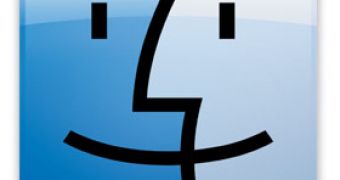
 14 DAY TRIAL //
14 DAY TRIAL // 
